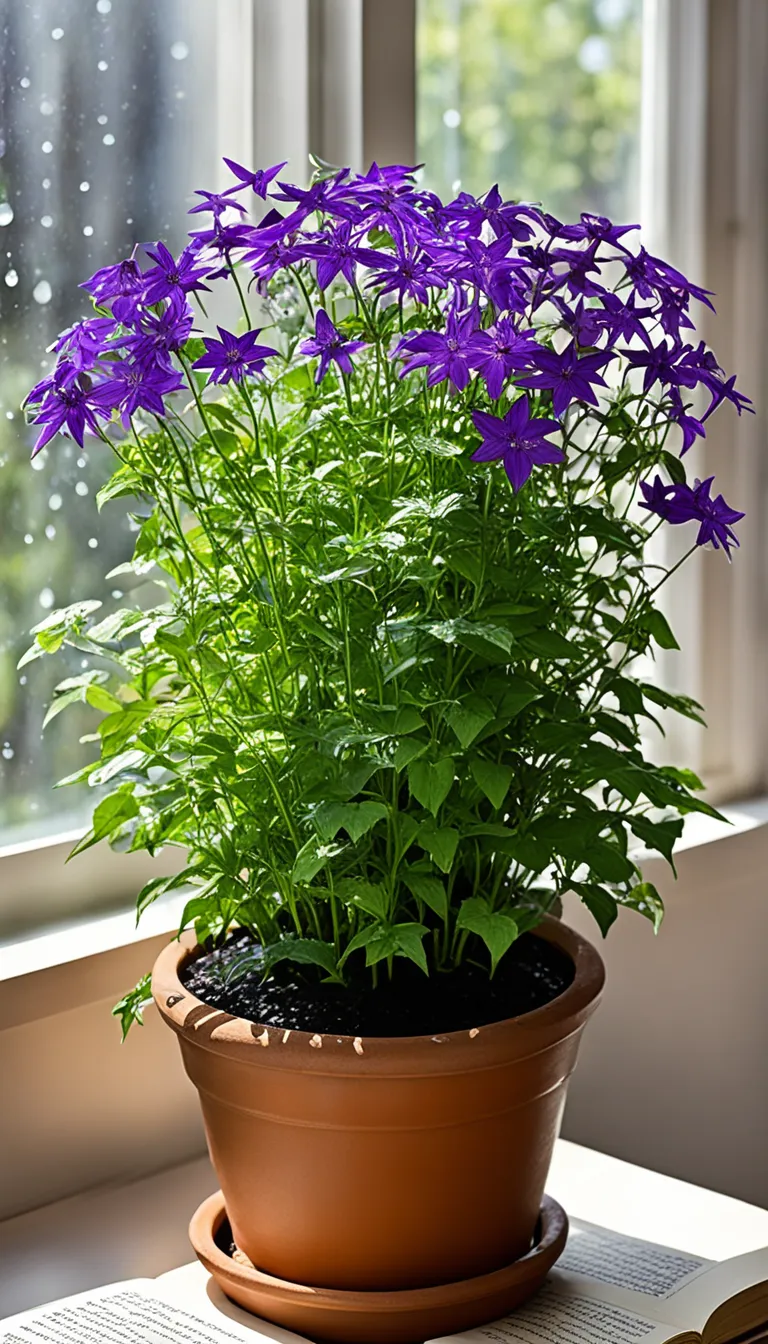Discover the charming Dalmatian bellflower, a perennial favorite for gardeners seeking ground-covering blooms and vibrant colors. This delightful plant, known for its star-shaped flowers and lush foliage, is a true spectacle in any garden. Bursting with surprise and akin to a visual explosion, the Dalmatian bellflower captivates with its dazzling array of colors.
Originating from the Dalmatian region of Croatia, this hardy plant has made its way into the hearts and gardens of enthusiasts worldwide. Its resilience and easy-going nature make it a perfect choice for both seasoned and novice gardeners alike. But what truly sets it apart? It’s the bellflower’s ability to spread joy through its expansive coverage and long blooming season.
Are you ready to add a splash of excitement to your garden? The Dalmatian bellflower is your go-to plant! Not only does it bring life to your garden beds, but it also serves as an excellent ground cover, filling in those gaps with its enchanting blossoms. So, how can you resist the allure of this garden gem?
- Ground-Covering Blooms: Ideal for creating a lush carpet of color.
- Vibrant Colors: Adds a vivid palette to your garden with shades of blue, purple, and pink.
- Star-Shaped Flowers: Unique blooms that are both eye-catching and delightful.
Whether you’re looking to enhance your garden’s aesthetic, attract pollinators, or simply enjoy the simple pleasure of gardening, the Dalmatian bellflower is a choice that promises beauty and satisfaction. Embrace the wonder of this floral treasure and watch as your garden transforms into a vibrant tapestry of color and life.

What is Dalmatian Bellflower?
The Dalmatian bellflower, or Campanula portenschlagiana, is a herbaceous perennial that’s native to the Dalmatian mountains in Croatia. This enchanting plant is renowned for its abundant star-shaped flowers, which burst forth in a dazzling array of purple and blue hues, creating a visual explosion in the garden. Its low-growing, mat-forming habit makes it an ideal choice for ground cover, rock gardens, or draping over walls.
One of the reasons gardeners are so smitten with the Dalmatian bellflower is its surprising resilience. Despite its delicate appearance, this plant is tough, tolerating a range of conditions from drought to frost. The Dalmatian bellflower’s ability to spread quickly and cover bare spots also adds to its popularity, offering both beauty and practicality.
Furthermore, this perennial isn’t just a pretty face; it’s also a magnet for pollinators such as bees and butterflies, adding to the ecological value of your garden. With its easy-going nature and stunning display, the Dalmatian bellflower is a true gem for both novice and experienced gardeners alike.

How to Care for Dalmatian Bellflower?
Caring for Dalmatian bellflowers is a delightful task for any gardener who loves a show of color and a carpet of blooms. These hardy perennials are not only a visual treat but also relatively easy to maintain. Here’s how you can ensure your Dalmatian bellflowers are the talk of the neighborhood:
Firstly, let’s talk about watering. Your Dalmatian bellflowers crave consistency. They prefer moist, well-drained soil, so regular watering is key, especially during dry spells. However, be careful not to overwater as this can lead to root rot. A good rule of thumb is to check the soil’s moisture level before watering.
When it comes to sunlight, these beauties enjoy the sun but appreciate a little afternoon shade in hotter climates. Ideally, aim for a spot that receives full to partial sunlight. This will ensure your bellflowers bloom to their full potential.
The right soil conditions are crucial for the Dalmatian bellflower. They thrive in rich, well-draining soil with a neutral to slightly alkaline pH level. If you’re unsure about your soil quality, don’t hesitate to use a pH test kit or enrich your soil with compost.
Maintenance is a breeze if you keep a few things in mind. Deadheading spent flowers will encourage new blooms and prevent self-seeding if you wish to control their spread. In the spring, a light application of fertilizer can give your plants a boost. Additionally, dividing the plants every few years will keep them vigorous and prevent overcrowding.
- Regular watering, but avoid waterlogging
- Full to partial sunlight exposure
- Rich, well-draining soil with neutral to slightly alkaline pH
- Deadheading to encourage more blooms
- Occasional fertilization for robust growth
- Division every few years to maintain plant health
By following these simple care instructions, your Dalmatian bellflowers will flourish, creating a stunning visual impact in your garden that will make both you and your flowers burst with pride!

What are the Dalmatian Bellflower Varieties?
When it comes to adding a splash of color and charm to your garden, the Dalmatian bellflower doesn’t disappoint. With several varieties to choose from, each offers its own unique twist on beauty and resilience. Let’s dive into the world of these delightful bloomers:
- Campanula portenschlagiana – Often heralded as the quintessential Dalmatian bellflower, this variety boasts a profusion of violet-blue, bell-shaped flowers that create a stunning carpet of color when in full bloom.
- Campanula poscharskyana – Known for its star-shaped flowers, this trailing variety spreads eagerly and presents a softer lavender hue that can soften any garden edge or rockery.
- Campanula ‘Birch Hybrid’ – A hybrid between portenschlagiana and poscharskyana, this type offers the best of both worlds with abundant flowering and a vigorous growth habit.
Each variety of Dalmatian bellflower has its own preferred conditions, but all share a love for well-drained soil and a sunny to a partly shaded environment. Whether you’re looking to cover a bare patch of earth or cascade over a stone wall, there’s a Dalmatian bellflower variety that’s perfect for the job. The explosion of color they bring will surely be a surprise to any garden visitor!





